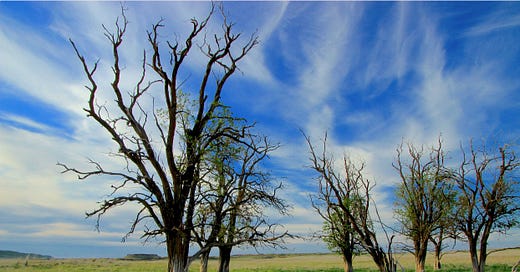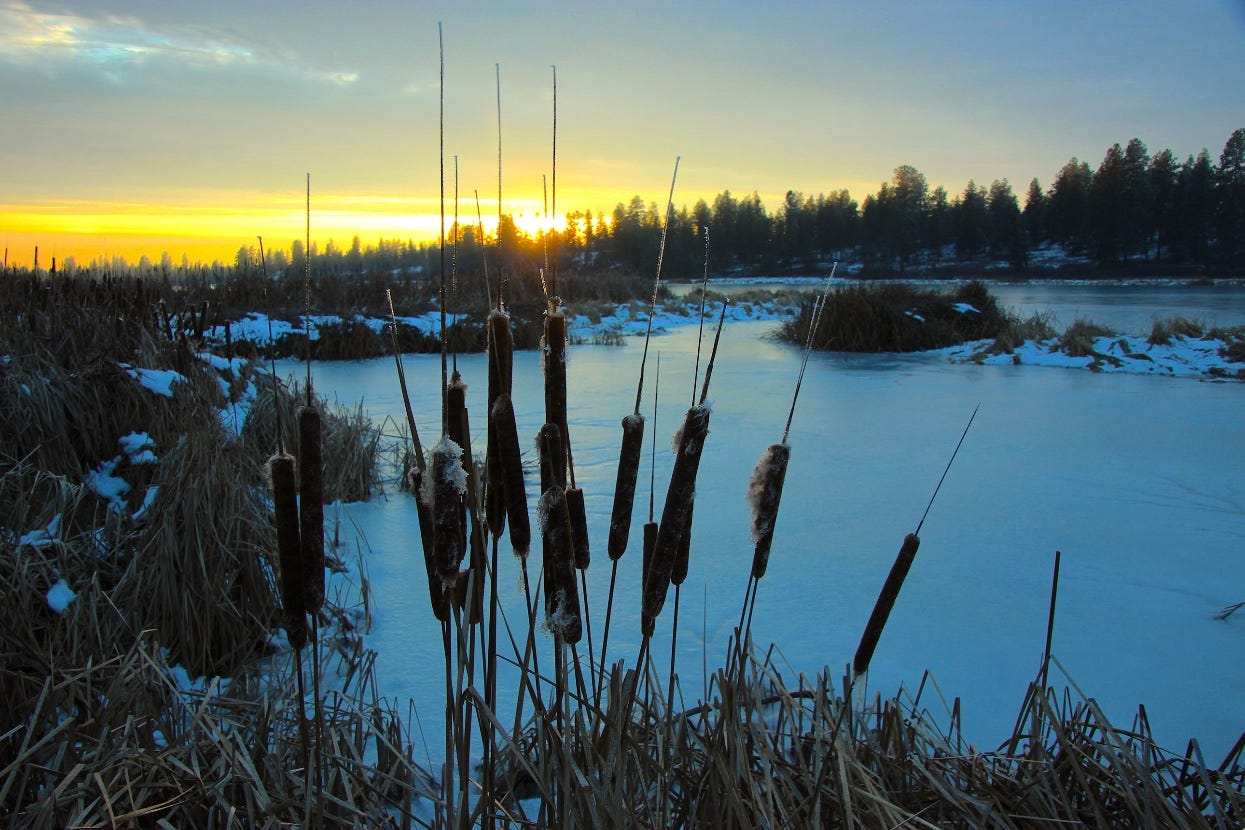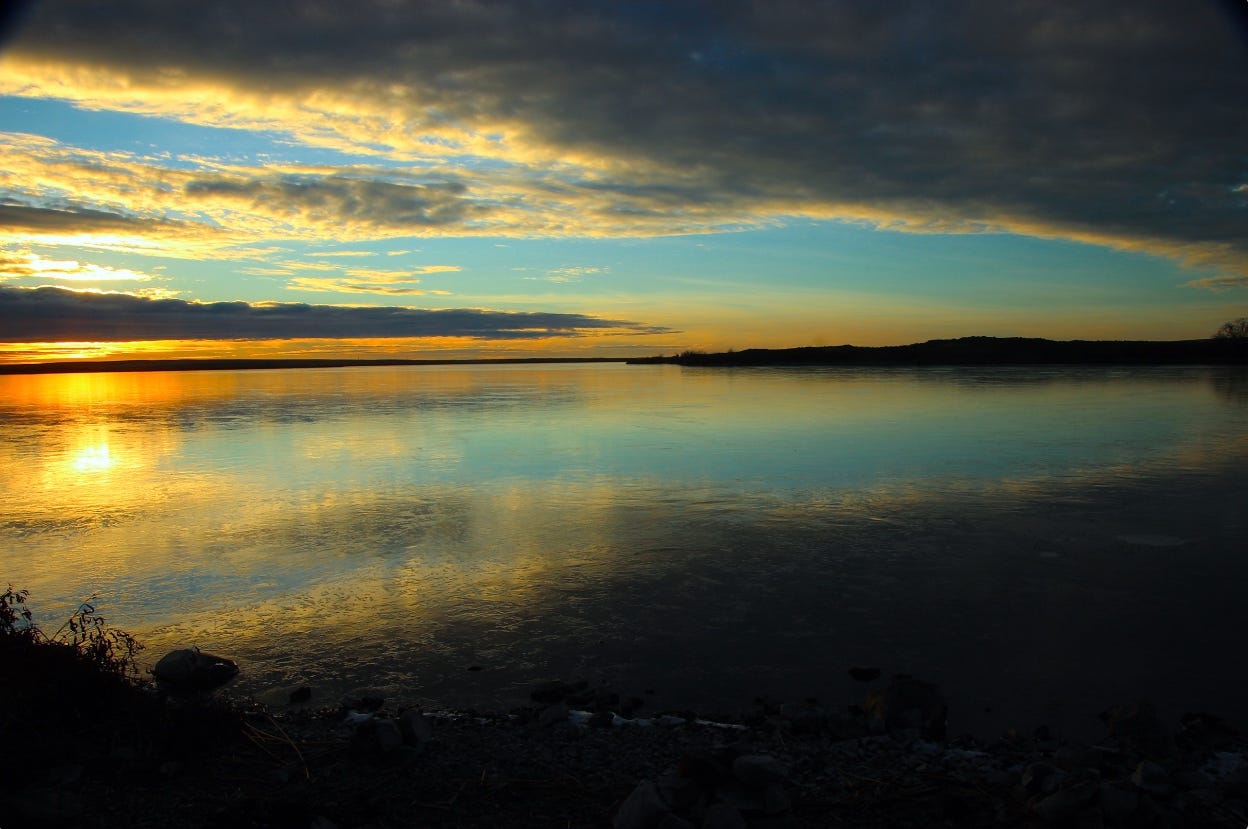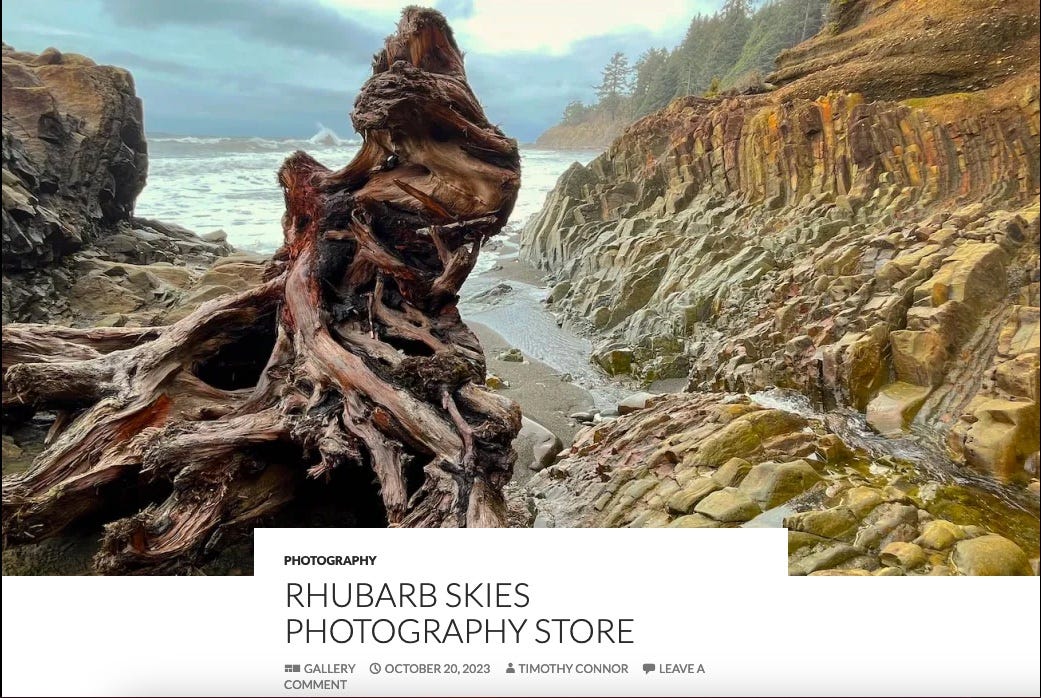“Praise”—Aging locust trees at an abandoned farmstead, deep in the scabland triangle north of Benge, WA
Lone on the Range
Thirty years ago James Howard Kunstler wrote something that opened my eyes to the world around me. It was The Geography of Nowhere, a witty, beautifully written book about unbeautiful things—namely the soul-sucking infrastructure and commercial tracts of uninspired urban design and architecture.
Among other things, Kunstler explained why having to walk to work along an elevated freeway—traffic roaring, grimy rainwater dripping and gushing on days, well, like today—would cause me to feel sluggish and often-times depressed. But it also explained why it’s hard not to feel so much better when, for example, we make time to visit the Duncan Garden or the nearby Nishinomiya Tsutakawa Japanese Garden in Manito Park. The aesthetics of environment were more important than I realized, and Kunstler described this in ways that were as insightful as they were indicting and entertaining.
I had several reasons for writing my recent book, Beautiful Wounds, which rests heavily on photography. Early on in my treks I had to challenge myself to change my attitude about being alone in stark terrain. It was a way to confront the loneliness that was eating away at my heart. Whether that long process made me a better person is for others to decide. But I know it made me a better photographer in that the sojourn with camera required patience and creativity, which is hard to come by when you’re feeling anxious and despondent. It helped me open my eyes to the beauty that resides in natural austerity if you have the patience to wander and explore.
That said, here are some of the images from those outings, with a bit of annotation.
“Three kings”—raw buttes of exposed basalt from the easternmost scabland tract south of Rock Lake in Whitman County. Most times I’ve visited this spot there has been a pair of Red-tail hawks circling over the butte on the right. You can imagine these buttes as the ribs of loess-covered Palouse hills before the Ice Age floods rampaged through here, carrying away countless tons of loess and basalt, and carving out Rock Lake in the process. In the “windows” to the left and between the two smaller buttes you can see “Bretz hills”—surviving Palouse hills that were reshaped with the steeper, prow-shaped slopes facing the direction from which the floodwaters arrived.
Crown of cat-tails on a frozen lake at the Slaven Natural Area south of Spokane, along a scabland tract that feeds into the Turnbull National Wildlife Refuge further west.
Fields near Mt. Hope, WA looking toward Mica Peak and the Idaho mountains to the east.
“Winter at Sprague Lake”—I like the way the sunset is burnished and reflected on the thin ice forming on the lake as the temperature was dropping. It was worth the wait.
To continue reading, please subscribe and support The Daily Rhubarb….











